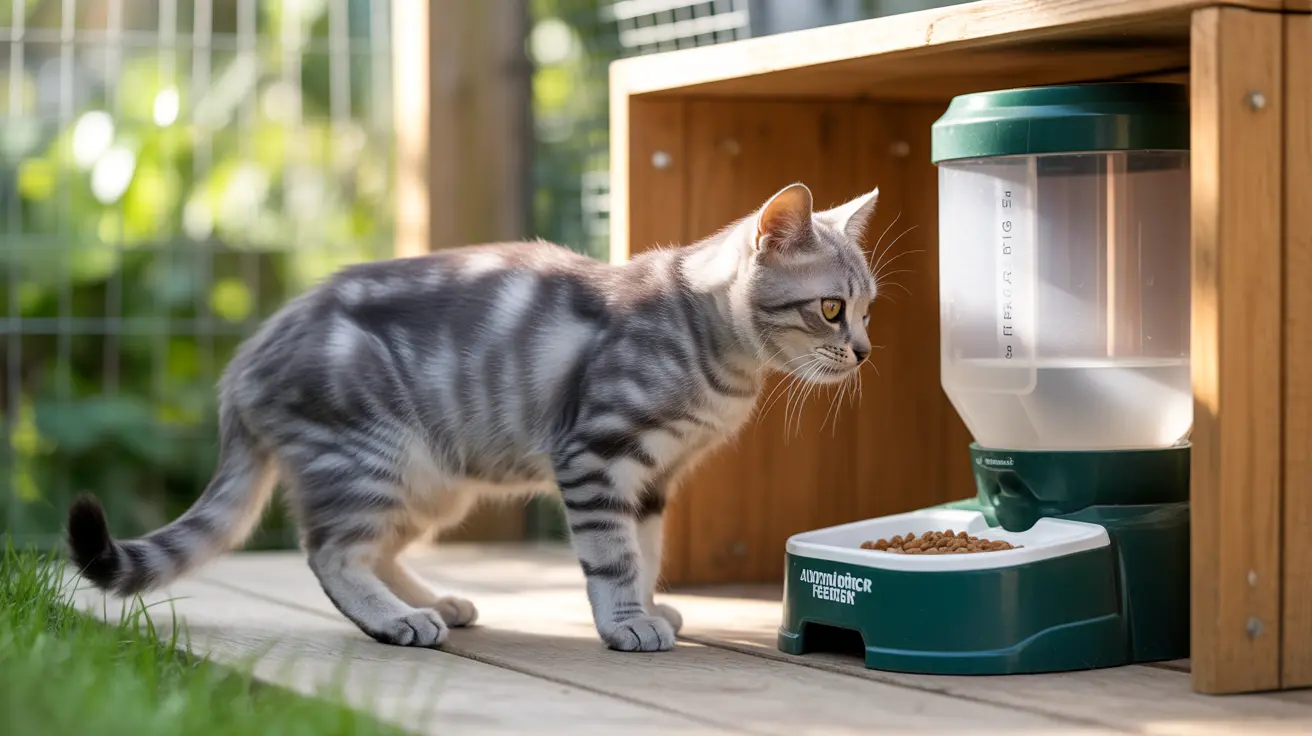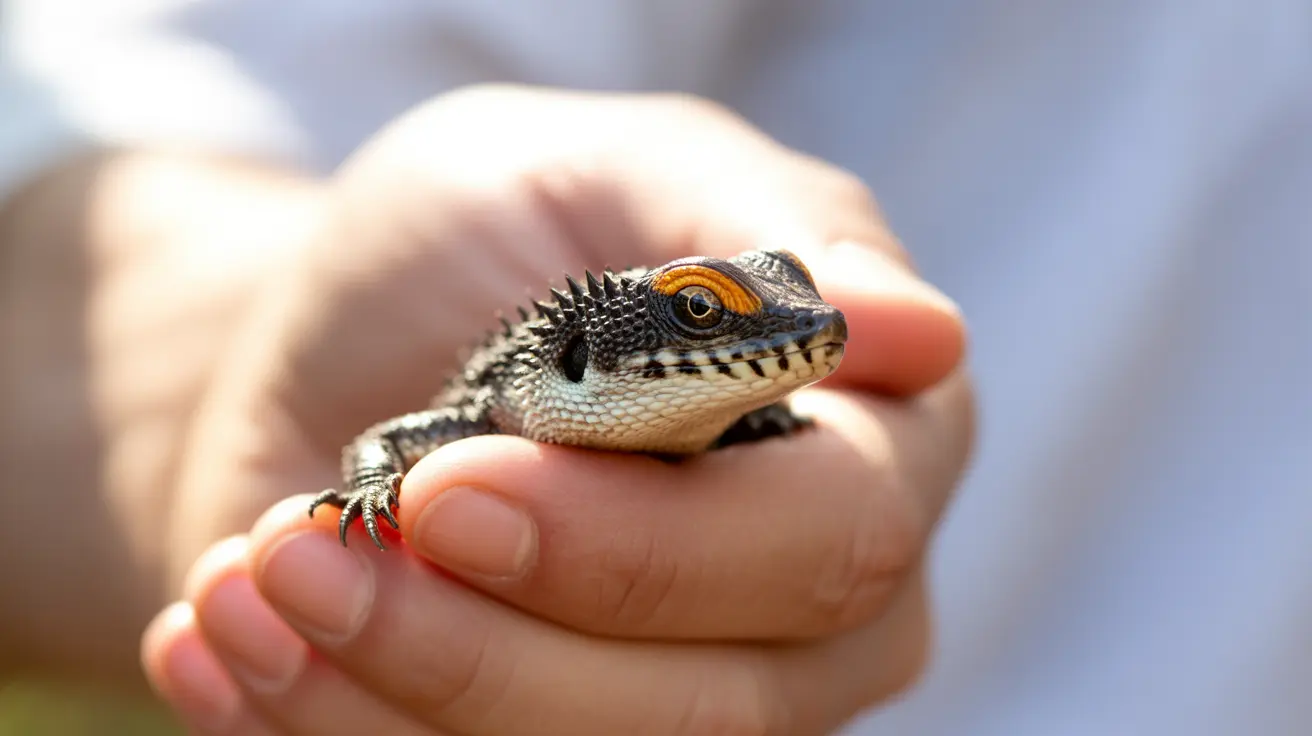Recognizing Pain in Cats: 14 Essential Signs Every Owner Must Know
Cats are masters of disguise when it comes to hiding their discomfort. This evolutionary trait, designed to protect them from predators in the wild, can work against them in our homes, making recognizing pain in cats one of the most challenging aspects of feline care. Unlike dogs who may whimper or limp obviously when hurt, cats often suffer in silence, masking their pain until it becomes severe.
Understanding how to identify pain in your feline companion is crucial for maintaining their health and quality of life. As cats live longer than ever before, they're increasingly susceptible to age-related conditions like osteoarthritis, dental disease, and other painful ailments. Early recognition of pain signs can mean the difference between swift treatment and prolonged suffering. This comprehensive guide will equip you with the knowledge to spot even the subtlest indicators that your cat may be experiencing discomfort.
Why Cats Hide Their Pain
Cats instinctively hide or mask pain as a survival mechanism inherited from their wild ancestors. In nature, showing weakness or vulnerability could make them targets for predators or competitors. This deeply ingrained behavior means that by the time a cat openly displays signs of distress, they may have been suffering for quite some time.
Pain management specialists now advise cat owners to assume pain is present when conditions commonly associated with discomfort are diagnosed. This proactive approach helps ensure cats receive appropriate treatment before their condition deteriorates significantly.
14 Key Signs Your Cat May Be in Pain
Physical and Postural Changes
One of the most reliable ways of recognizing pain in cats is observing changes in their physical posture and movement patterns. Cats in pain often exhibit distinctive body language that differs markedly from their normal behavior.
A hunched posture with a lowered head is a classic sign of discomfort. Your cat may stand with their front legs tucked under their chest to reduce weight on painful hips or back legs. When lying down, they might keep their legs tucked beneath them rather than stretching out comfortably. You may also notice your cat has stopped their characteristic stretching behaviors or avoids normal scratching activities.
Limping is an obvious indicator, but subtle changes in gait can be equally telling. Watch for trembling of the rear legs when standing, reluctance to use stairs, decreased jumping onto furniture, or an aversion to walking on slick floor surfaces. These mobility changes often indicate joint pain or muscle discomfort.
Facial Expression and Body Language Changes
Cats in pain frequently display altered facial expressions that attentive owners can learn to recognize. Look for grimacing, squinting, or a vacant stare. Your cat might appear wide-eyed or seem half asleep more often than usual. Drooping whiskers, lowered or flattened ears, and a tense overall expression are additional indicators of discomfort.
An arched back combined with a tucked belly can signal abdominal pain, while trembling or overall tenseness suggests your cat is struggling with discomfort. These physical manifestations often accompany other behavioral changes.
Vocalization Changes
Changes in vocalization patterns are significant indicators when recognizing pain in cats. You might notice more frequent meowing, unexpected purring (which can be a self-soothing behavior), or growling and hissing when approached by humans or other animals. Some cats become more vocal overall, while others may become unusually quiet.
Pay attention to new or unusual sounds your cat makes, including howling, which can indicate significant distress. However, remember that some cats become less vocal when in pain, so a normally chatty cat becoming quiet is equally concerning.
Changes in Daily Activities and Habits
Disruptions to your cat's normal routine often signal pain or discomfort. You may observe pacing or restlessness as your cat struggles to find a comfortable position. Decreased energy or endurance for play, reduced interest in toys, and overall decreased activity levels are common signs.
Litter box habits frequently change when cats are in pain. They might soil outside the box due to discomfort when squatting, or the pain might make it difficult to climb into the box. Alternatively, some cats may spend more time in the litter box due to urinary discomfort or strain.
Grooming and Self-Care Changes
Grooming behaviors often change significantly when cats are experiencing pain. You might notice reduced grooming leading to a messy or matted coat, particularly in areas that are difficult to reach when movement is painful. Conversely, some cats engage in over-grooming, excessively licking or biting areas that hurt, sometimes causing skin trauma.
Self-mutilation behaviors, including excessive licking or biting that causes visible trauma to the skin, are serious indicators of localized pain or discomfort.
Behavioral and Social Changes
Painful cats frequently withdraw from normal family interactions. They may hide more often, exhibit reduced eating and drinking, and show altered sleep patterns. You might find your usually social cat avoiding contact or seeking out isolated spaces.
Changes in appetite are particularly significant. While some cats eat less when in pain, others might show increased interest in food as a comfort behavior. Similarly, sleep patterns may change, with some cats sleeping more while others seem restless and unable to settle comfortably.
Increased Aggression or Sensitivity
A previously friendly cat may become aggressive when experiencing pain. This might manifest as growling, hissing, or lashing out when handled. They may avoid being brushed or picked up and assume a defensive posture when approached. Increased sensitivity to touch, particularly in specific areas, often indicates localized pain.
Personality changes can be subtle but significant. A normally calm cat might become irritable, while an active cat might become withdrawn and less engaging with their environment.
Understanding Different Types of Cat Pain
Acute vs. Chronic Pain
Acute pain in cats is sudden and short-term, typically resulting from injury, surgery, or sudden illness. This type of pain often produces more obvious symptoms and may be easier to identify. Chronic pain, however, develops gradually and persists over time. Conditions like osteoarthritis, dental disease, and some cancers cause chronic pain that cats are particularly adept at hiding.
Chronic pain signs are often more subtle and may be mistaken for normal aging. This makes recognizing pain in cats with long-term conditions particularly challenging for owners.
Common Causes of Pain in Cats
Arthritis and Joint Disease
Osteoarthritis is increasingly recognized as a major cause of chronic pain in cats, particularly as they age. This condition involves painful inflammation of the joints and can significantly impact mobility and quality of life. Signs include reluctance to jump, difficulty using stairs, and changes in running gait or willingness to chase objects.
Dental Problems
Dental issues, including gingivitis and periodontitis, are common sources of pain in cats. These conditions may cause decreased appetite, difficulty eating, drooling, and pawing at the face. Dental pain can be particularly difficult to identify since many cats continue eating despite significant discomfort.
Urinary Tract Issues
Urinary tract infections and other urinary conditions cause significant discomfort and may lead to frequent litter box use, straining, or urinating outside the box. These conditions require prompt veterinary attention.
Cancer and Tumors
Cancer can cause pain through tumor growth, pressure on organs, or as a side effect of treatment. Pain related to cancer may be localized or widespread and can vary in intensity.
The Glasgow Composite Measure Pain Scale for Cats
Originally developed for veterinary use, the Glasgow Composite Measure Pain Scale can help cat owners assess their pet's pain severity by observing behavior and body language. This tool involves scoring various behavioral responses and physical indicators to determine pain levels.
The scale evaluates factors such as vocalization, attention to wounds, mobility, response to touch, demeanor, posture, appetite, and overall activity level. Each category is scored, and the total provides an indication of pain severity. Higher scores indicate greater pain levels and suggest the need for immediate veterinary consultation.
While this scale was designed for professional use, understanding its principles can help owners make more objective assessments of their cat's condition and communicate more effectively with their veterinarian.
What to Do When You Suspect Your Cat Is in Pain
Immediate Steps
If you suspect your cat is in pain, the first step is to observe and document their symptoms. Note specific behaviors, when they occur, and their frequency. Video documentation can be particularly helpful for showing your veterinarian exactly what you're observing.
Create a comfortable environment for your cat by providing easy access to food, water, and litter boxes. Consider placing bedding in lower, more accessible locations and covering slippery floors to make movement easier and safer.
What NOT to Do
Never administer human pain medications to cats. Over-the-counter pain relievers like aspirin, ibuprofen, and acetaminophen are toxic to cats and can be fatal. Even medications that are safe for dogs may be dangerous for cats due to their unique metabolism.
When to Contact Your Veterinarian
Any suspicion of pain should prompt veterinary consultation. Don't wait for symptoms to worsen or hope they'll resolve on their own. Early intervention provides the best outcomes for your cat's health and quality of life. Contact your veterinarian immediately if you observe multiple pain indicators or if your cat's condition seems to be deteriorating rapidly.
Creating a Pain-Management Environment
While waiting for veterinary care or as part of ongoing pain management, you can modify your home environment to help your cat feel more comfortable. Provide low-sided litter boxes and place them in multiple locations throughout your home. Install carpeted steps or ramps to help your cat reach favorite elevated spots without jumping.
Raise food and water bowls to reduce the need for your cat to bend their neck uncomfortably. Ensure your cat has access to warm, soft bedding and quiet spaces where they can rest undisturbed. Maintain a consistent routine to reduce stress, which can exacerbate pain perception.
Communicating with Your Veterinarian
When discussing your concerns with your veterinarian, be specific about what you've observed. Describe changes in behavior, appetite, mobility, and social interaction. Mention when these changes started and whether they seem to be getting worse. Videos of your cat's behavior can provide valuable diagnostic information.
Be prepared to discuss your cat's medical history, including any previous injuries, surgeries, or diagnoses. This information helps your veterinarian understand potential causes of pain and develop appropriate treatment plans.
Professional Pain Management Options
Veterinarians have various prescription medications available for treating cat pain. These may include NSAIDs like robenacoxib, opioids such as buprenorphine, or newer options like frunevetmab (Solensia), an FDA-approved monthly injectable specifically for arthritis pain in cats.
Other medications your veterinarian might prescribe include gabapentin for chronic pain and anxiety, amitriptyline for nerve pain, or amantadine for neuropathic or cancer-related pain. The choice of medication depends on the type and severity of pain, as well as your cat's overall health status.
The Importance of Preventive Care
Regular veterinary checkups play a crucial role in preventing painful conditions or catching them early. Preventive care includes vaccinations, dental cleanings, weight management, and routine health screenings. These measures can help identify potential problems before they become painful conditions requiring more intensive treatment.
Maintaining your cat at an appropriate weight reduces strain on joints and decreases the risk of arthritis progression. Regular dental care prevents painful dental disease, and staying current with vaccinations protects against infections that could cause discomfort.
Frequently Asked Questions
- How long can a cat hide pain before showing obvious signs?
Cats can hide pain for weeks or even months before displaying obvious symptoms. Their evolutionary instinct to mask vulnerability means that by the time pain becomes apparent to owners, the condition may be quite advanced. This is why regular veterinary checkups and attention to subtle behavioral changes are so important.
- Is purring always a sign of contentment, or can it indicate pain?
While purring often indicates contentment, cats also purr when they're in pain as a self-soothing mechanism. Unexpected purring, especially when combined with other signs like hiding or changes in posture, may actually indicate discomfort rather than happiness.
- Can indoor cats develop arthritis and joint pain?
Yes, indoor cats can definitely develop arthritis and joint pain, particularly as they age. While outdoor cats may face more injury risks, indoor cats can still develop age-related joint disease, especially if they're overweight or have a genetic predisposition to joint problems.
- How quickly should I seek veterinary care if I suspect my cat is in pain?
You should contact your veterinarian as soon as you notice signs of pain in your cat. Even if symptoms seem mild, early intervention can prevent conditions from worsening and improve your cat's quality of life. If multiple pain indicators are present or symptoms seem severe, seek immediate veterinary attention.
- Are there any safe home remedies for cat pain while waiting for veterinary care?
While waiting for veterinary care, focus on making your cat comfortable by providing easy access to necessities, warm bedding, and a quiet environment. However, never give any medications, including human pain relievers or even cat medications from previous treatments, without veterinary guidance. These can be dangerous or fatal to cats.
- Can stress cause physical pain in cats, or just behavioral changes?
Stress can indeed cause physical symptoms in cats, including digestive issues, muscle tension, and increased sensitivity to pain. Chronic stress can also exacerbate existing painful conditions. Maintaining a calm, consistent environment helps reduce stress-related pain and supports overall health.
- How can I tell the difference between pain and normal aging in my older cat?
While some slowing down is normal with age, significant changes in mobility, appetite, grooming, or social behavior often indicate pain rather than simple aging. If your senior cat stops doing activities they previously enjoyed or shows other signs mentioned in this article, consult your veterinarian rather than assuming it's just old age.
Conclusion
Recognizing pain in cats requires careful observation and understanding of subtle behavioral changes. Since cats instinctively hide their discomfort, owners must become detectives, watching for signs like changes in posture, mobility, grooming habits, vocalization, and social behavior. The key is knowing your cat's normal behavior patterns so you can quickly identify when something changes.
Remember that any suspicion of pain warrants veterinary consultation. Early recognition and treatment not only improve your cat's quality of life but can also prevent conditions from progressing to more serious stages. By staying alert to these signs and working closely with your veterinarian, you can ensure your feline companion receives the care they need to live comfortably and happily throughout their life.






